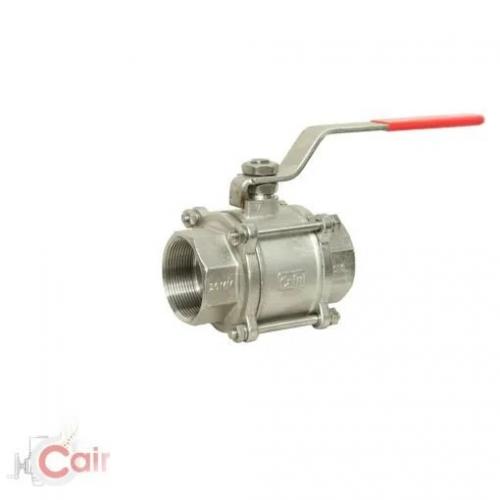The Ultimate Guide to Ball Valves: Exploring the World of Ball Valve Manufacturing

In the realm of industrial machinery and plumbing systems, ball valves play a pivotal role in controlling the flow of liquids and gases. With their versatility, efficiency, and reliability, ball valves have become a fundamental component in various applications. This article delves into the intricacies of ball valves, shedding light on their manufacturing process, features, and wide-ranging applications.
Understanding Ball Valves
A ball valve is a kind of quarter-turn valve that regulates fluid flow using a hollow, perforated ball that pivots. It works on a simple principle; when the handle is turned at a 90-degree angle, the ball rotates, either allowing or obstructing the flow through the valve. Ball valves are renowned for their quick shutoff capabilities, making them ideal for applications that require precise control.
The Ball Valve Manufacturing Process
The manufacturing of ball valves involves several crucial steps, each contributing to the final product's quality and performance. Let's explore the key stages of ball valve production:
Material Selection: The process begins with selecting the appropriate materials. Ball valves can be made from various materials, including stainless steel, brass, bronze, and PVC. The choice of material depends on factors such as the type of fluid or gas it will handle, temperature, pressure, and environmental conditions.
Casting or Forging: Once the material is chosen, the next step is to shape it into the desired form. Manufacturers typically employ two primary methods: casting and forging. Casting involves pouring molten metal into a mold, whereas forging involves applying heat and pressure to shape the material.
Machining: After casting or forging, the rough valve bodies undergo precision machining. This process involves cutting, drilling, and grinding the material to achieve the required dimensions and create essential features like seats, seals, and threads.
Assembly: During assembly, various components such as the ball, stem, seats, body, and end connectors come together. Skilled technicians ensure that each part fits perfectly, and they often use specialized tools to ensure tight seals and smooth operation.
Testing: Quality control is paramount in ball valve manufacturing. Rigorous testing is conducted to assess the valve's integrity, strength, and leakage. This stage ensures that the valve meets industry standards and performs optimally under different conditions.
Features and Types of Ball Valves
Ball valves come in various designs and configurations, each tailored to suit specific applications. Here are some common types of ball valves:
Full Bore Ball Valves: Full bore ball valves feature an unrestricted flow path, providing minimal resistance to fluid or gas flow. They are ideal for applications where low-pressure drops and high flow rates are crucial.
Reduced Bore Ball Valves: In contrast, reduced bore ball valves have a smaller ball and flow path, resulting in a higher pressure drop. These valves are commonly used in applications where flow control is necessary, such as throttling.
Floating Ball Valves: Floating ball valves rely on the pressure of the fluid to create a tight seal between the ball and the seats. They are appropriate for applications requiring low to moderate pressure.
Trunnion Ball Valves: Trunnion ball valves feature additional mechanical anchoring of the ball at the top and bottom, providing enhanced support and stability. They are commonly used in high-pressure and large-diameter applications.
V-port Ball Valves: V-port ball valves have a V-shaped ball, allowing for more precise control of flow rates. These valves are often used in applications that require accurate flow regulation.
Applications of Ball Valves
Ball valves find applications across various industries due to their exceptional performance and reliability. Some common uses include:
Oil and Gas Industry: In the oil and gas sector, ball valves are employed in pipelines, refineries, and petrochemical plants for their ability to handle corrosive and high-pressure fluids.
Water Treatment and Distribution: Ball valves play a vital role in water treatment plants and distribution systems, enabling efficient control and isolation of water flow.
HVAC Systems: eating, ventilation, and air conditioning systems utilize ball valves for their precise control of coolant and airflow.
Manufacturing Processes: Ball valves are crucial in manufacturing processes where controlling the flow of various liquids and gases is essential.
Aerospace and Automotive: In aerospace and automotive applications, ball valves are used for fuel and fluid management systems.
Ball Valve Manufacturer: Ensuring Quality and Performance
Choosing a reliable and reputable ball valve manufacturer is crucial to ensure the longevity and performance of these critical components. A trustworthy manufacturer will adhere to strict quality control measures, use top-grade materials, and offer comprehensive testing and certification processes.
Conclusion
Ball valves are indispensable components in the world of industrial machinery and plumbing systems. Their reliability, efficiency, and ease of use make them an attractive choice for a wide range of applications. Understanding the intricacies of ball valve manufacturing and the different types available can aid in selecting the appropriate valve for specific requirements.
Post Your Ad Here
Comments